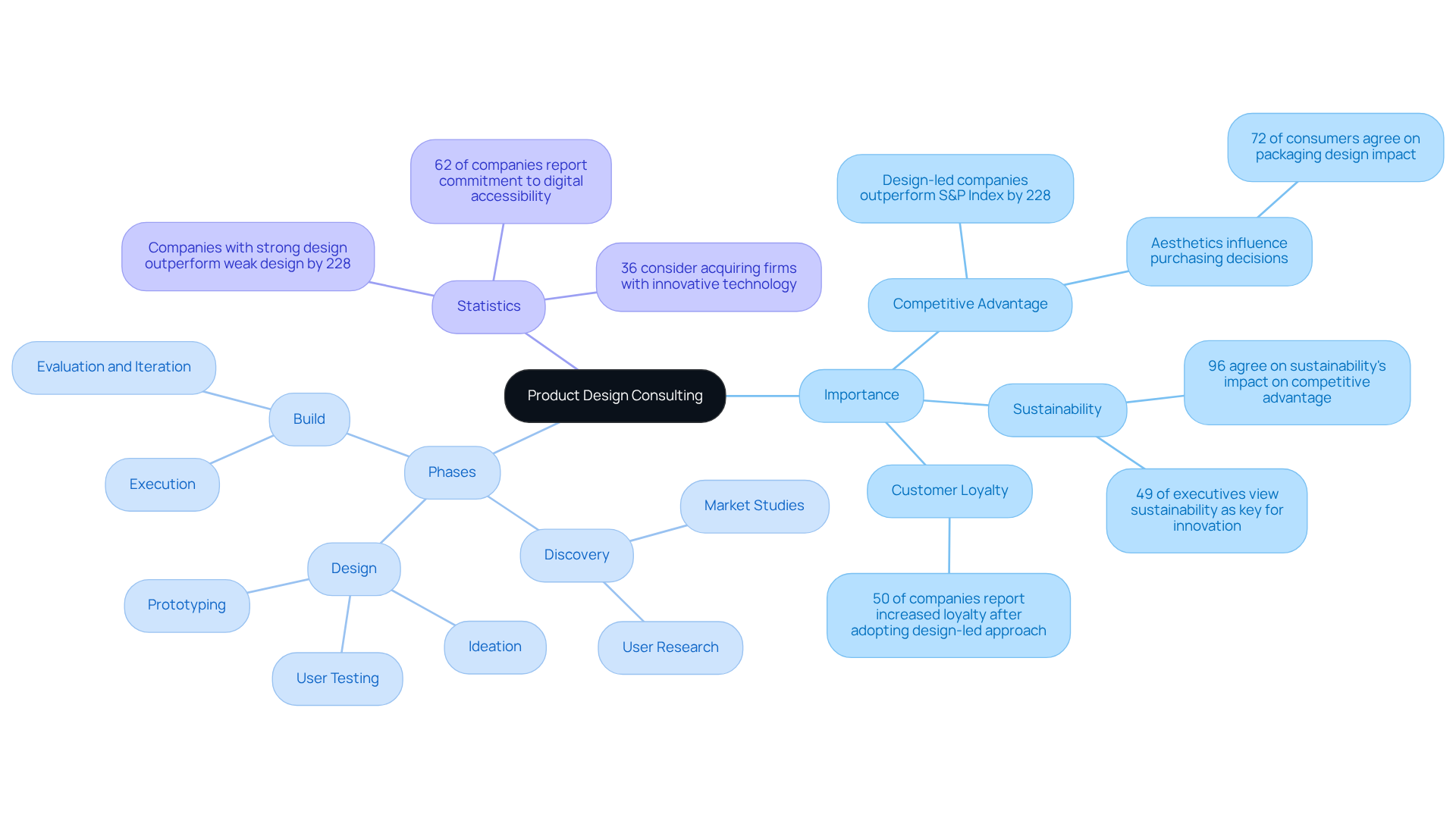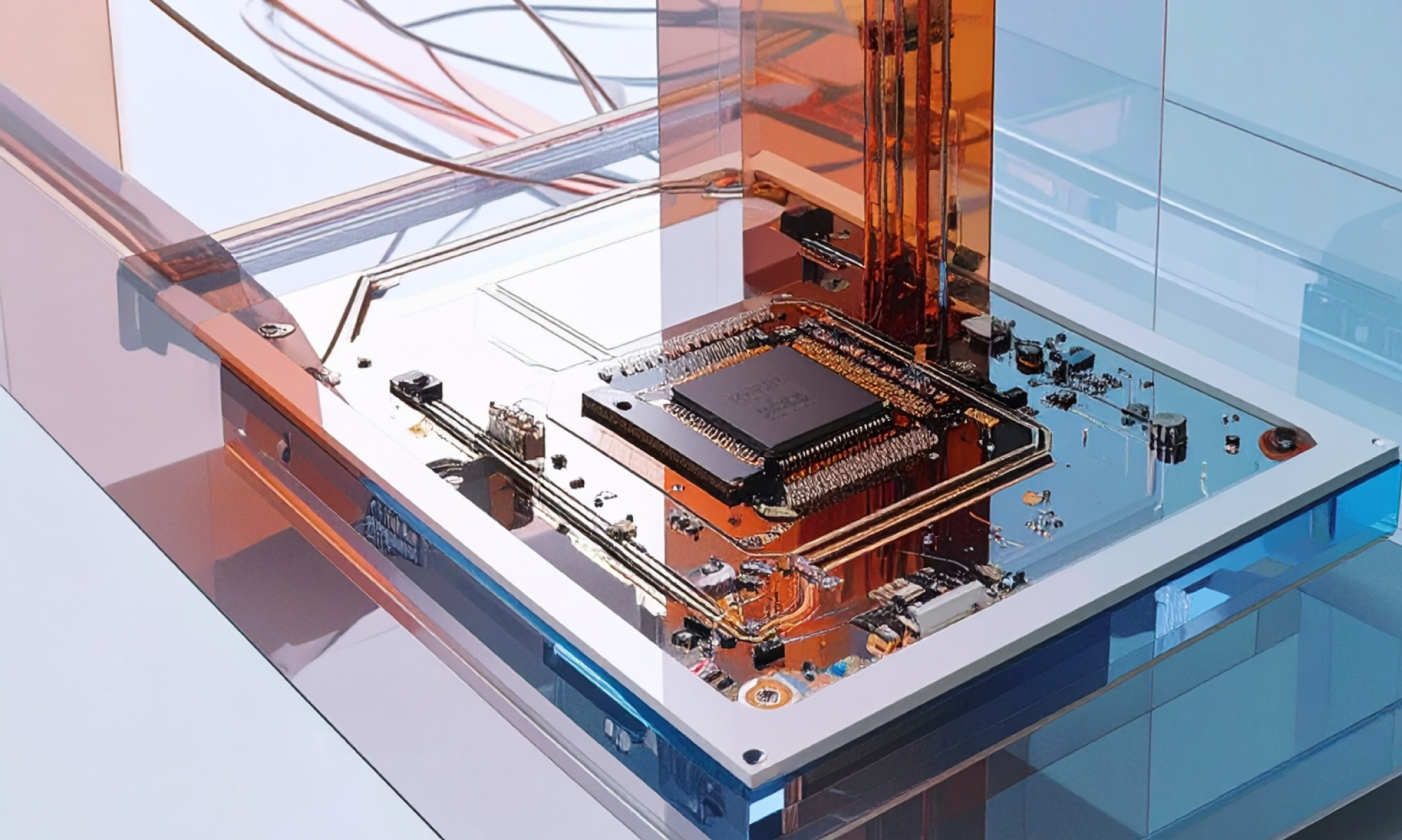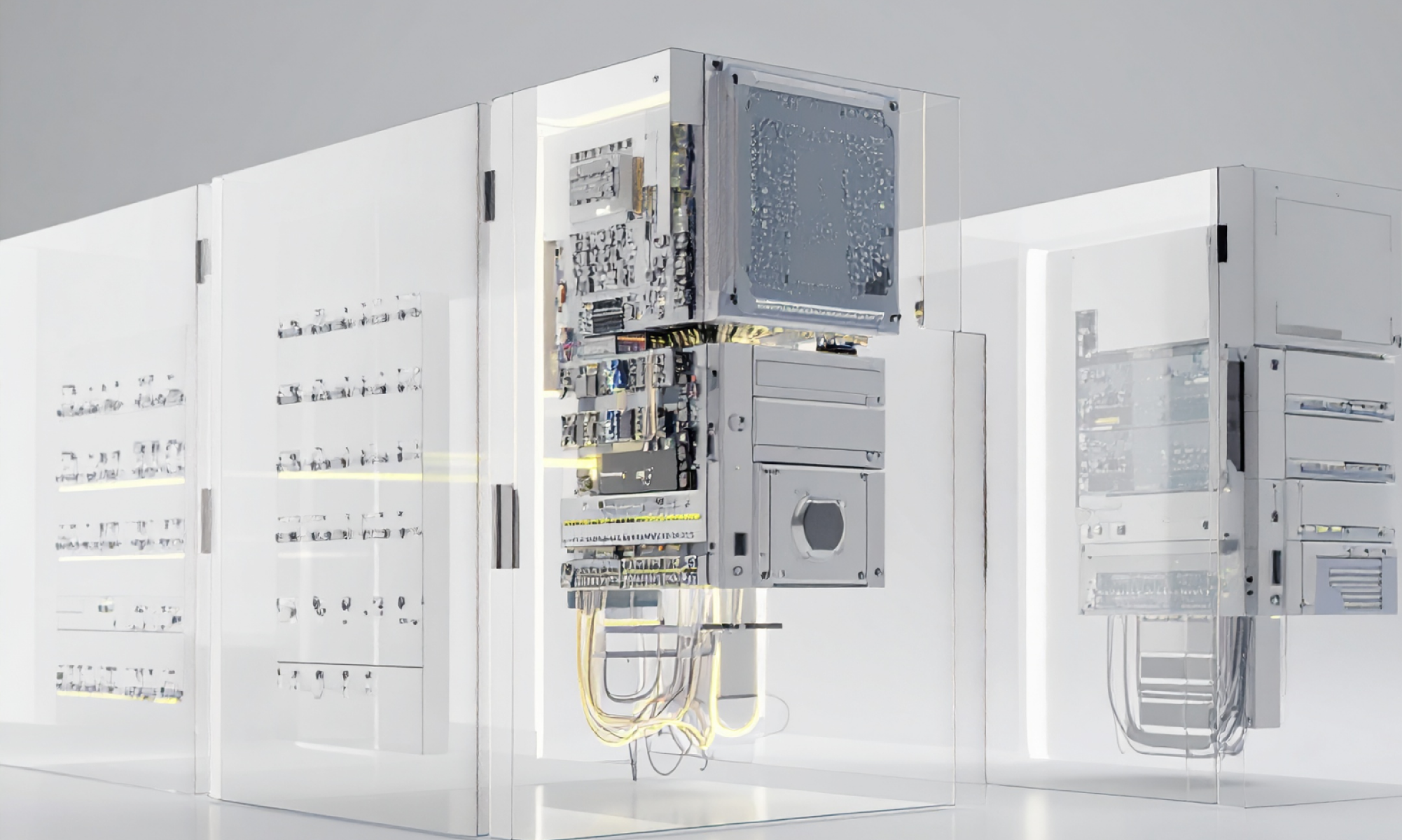AI
our blog
What is Product Design Consulting and Why It Matters for CTOs

Overview
Product design consulting is essential for CTOs, facilitating the transformation of ideas into market-ready products through a structured process that prioritizes user-centered design, innovation, and operational efficiency. Companies that engage in effective product design consulting not only boost user satisfaction and loyalty but also secure significant competitive advantages. These include:
- Faster revenue growth
- Enhanced market presence
This is supported by evidence from successful projects and relevant statistics. Furthermore, the strategic implementation of product design consulting can lead to measurable improvements in overall business performance, encouraging CTOs to prioritize this critical area.
Introduction
Product design consulting is essential in transforming innovative ideas into market-ready solutions. Despite its profound impact, many technology leaders remain unaware of its significance. By engaging with expert consultants, businesses can:
- Streamline product development processes
- Enhance user experiences
- Drive growth in a competitive landscape
However, as design methodologies and consumer expectations rapidly evolve, how can CTOs ensure they are leveraging product design consulting effectively to meet market demands and sustainability goals?
Define Product Design Consulting and Its Importance
Product design consulting is a crucial service in which experts assist businesses in the complex process of conceptualizing, designing, and refining products. At Studio Graphene, we offer a comprehensive approach that encompasses Discovery, Design, and Build services. Each phase is meticulously developed to align with market needs and client expectations. This multifaceted strategy incorporates essential stages such as user research, ideation, prototyping, and testing, all aimed at fostering innovation and significantly enhancing user experience.
The significance of product design consulting lies in its capacity to transform abstract ideas into tangible solutions. By leveraging the expertise of product design consulting, companies can effectively navigate the complexities of product development, ensuring their offerings are not only functional but also resonate with their target audience. Statistics reveal that companies prioritizing aesthetics outperform the S&P Index by 228% over a decade, underscoring the competitive advantage gained through effective design. Furthermore, 50% of companies adopting a design-focused approach report increased customer loyalty, highlighting the importance of user-centered creation in forging lasting connections.
Successful projects, such as the development of a user-friendly mobile application and web platform for Alchemy Wings, illustrate how strategic consulting can lead to groundbreaking innovations that not only meet but exceed user expectations, ultimately driving business growth and operational efficiency. Moreover, 72% of consumers agree that packaging aesthetics influence their purchasing decisions, emphasizing the critical role of presentation in consumer behavior. Product design consulting also assists firms in identifying unfulfilled customer needs, ensuring that products are tailored to market demands.
As noted by the Design Management Institute, firms with strong aesthetics outperform those with weaker aesthetics by 228% on the S&P Index, reinforcing the value of investing in design. Additionally, 49% of senior executives consider sustainability a crucial element in their innovation strategies, highlighting the contemporary importance of creativity in addressing both user needs and environmental considerations.

Trace the Evolution of Product Design Consulting
The evolution of product consulting traces its roots back to the early 20th century, a time when industrial aesthetics emerged as a distinct discipline, primarily focusing on aesthetics and functionality. This field has undergone significant transformation over the decades. The late 20th century marked a pivotal change with the rise of technology and digitalization, introducing methodologies such as computer-aided drafting (CAD) and user-focused principles. These innovations have paved the way for a more data-driven approach to creation, empowering companies to harness artificial intelligence and data analytics for deeper insights into consumer behavior and more inventive solutions.
Today, product design consulting embodies a collaborative and iterative approach to product development, reflecting a vital alignment with consumer needs and market trends. This shift is underscored by the fact that the research, strategy, and concept generation sector accounted for over 39% of revenue share in 2023, highlighting the growing importance of strategic planning within creative processes. As sectors like healthcare and technology increasingly invest in user experience, the integration of advanced technologies not only enhances quality but also improves operational efficiency, making it essential for CTOs to stay informed about these evolving trends.
At Studio Graphene, we exemplify our approach to product design consulting through our comprehensive offerings in digital service development: Discovery, Design, and Build. Our commitment to user-centered solutions is evident in our collaboration with Cypher, where we designed an innovative platform utilizing React.js, Node.js, and AWS services. This project not only showcased the breadth of Cypher’s offerings but also transformed their booking and administrative processes, resulting in a 30% increase in operational efficiency and a 25% reduction in processing time. This clearly illustrates how strategic planning can lead to substantial operational improvements. Ralf Speth's assertion that the cost of poor aesthetics can exceed the expense of excellent aesthetics further underscores the necessity of investing in quality solutions, reinforcing the importance of a deliberate approach to product creation.

Identify Key Characteristics and Processes in Product Design Consulting
Product development advisory is characterized by a user-focused approach, interdisciplinary teamwork, and a commitment to iterative progress. The advisory process typically unfolds through several key phases:
- Discovery—consultants gather insights into consumer needs and market conditions, acknowledging that 86% of shoppers will abandon a brand after two poor customer experiences.
- Ideation—creative solutions are brainstormed, leveraging diverse perspectives to foster innovation.
- Prototyping—initial concepts are created and tested, with research indicating that items with three or more prototype iterations are 50% less likely to fail.
- Implementation—the final offering is developed and launched.
Throughout this process, effective consultants prioritize communication and feedback, ensuring alignment among all stakeholders. This organized yet flexible method enables companies to adapt to changes and enhance their offerings based on real-time user feedback, ultimately boosting user satisfaction and driving business success. Notably, organizations that adopt a user-centered design (UCD) methodology can witness conversion rates rise by as much as 400%, underscoring the significance of a user-centric focus in service advisory. Furthermore, businesses that improve customer experience report a 33% increase in customer satisfaction, further emphasizing the importance of efficient development processes.

Examine Practical Applications and Benefits of Product Design Consulting
Consulting in creation plays a vital role in enhancing organizational efficiency and quality. By optimizing the development process, companies can significantly shorten time-to-market, a crucial factor in today's fast-paced environment. Involving design consultants often leads to improved user satisfaction, as these specialists emphasize user-centered design principles that resonate with target audiences. For instance, usability studies indicate that well-optimized products can achieve task success rates exceeding 90%, compared to typical rates around 78%. This contrast underscores the substantial improvements possible through effective consulting.
A significant illustration of this is the innovative logistics platform developed for Alchemy Wings. The project commenced by investigating the requirements of various stakeholders, including delivery partners and clients. The focus on client-centered creation resulted in the development of a straightforward yet impactful UI/UX, enabling all individuals to achieve their objectives effectively. The integration of advanced technologies—such as Google Maps for distance mapping, MangoPay for payment processing, and a reverse auction feature for order fulfillment—demonstrates how service enhancement can elevate operational efficiency.
Consultants offer critical insights into market trends and competitive analysis, which is essential in product design consulting, empowering businesses to make informed strategic decisions. This was evident in the partnership between DeviceLab and Nouslogic Telehealth, which led to the development of next-generation remote patient monitoring systems. This collaboration not only improved user involvement but also broadened market access, exemplifying the concrete advantages of creative advisory.
Furthermore, firms that leverage product design consulting frequently observe enhanced market presence and customer loyalty. Research indicates that companies utilizing product design consulting outperform their peers, achieving 32% faster revenue growth and 56% higher returns over five years. The creation of a user-friendly mobile application and web platform for Alchemy Wings, which includes sales data access and delivery validation, further illustrates how effective aesthetics can enhance customer experiences and drive operational success. This collaboration fosters a culture of innovation, enabling organizations to adapt and thrive in a competitive landscape, ultimately leading to sustainable business success. Additionally, it is crucial to recognize that design decisions can influence up to 80% of a product's total lifecycle emissions, highlighting the significance of sustainable design practices in product development.

Conclusion
Product design consulting plays a pivotal role in shaping successful products, transforming ideas into reality through a structured, user-centered approach. This service not only enhances product functionality but also ensures resonance with the target audience, ultimately leading to increased customer loyalty and market competitiveness.
The discussion highlights several key aspects of product design consulting, including:
- Its historical evolution
- The importance of user-centered design principles
- Its significant impact on operational efficiency
Through case studies, such as the successful development of platforms for Alchemy Wings and Cypher, it becomes evident that strategic consulting can lead to substantial improvements in user experience and business growth. Furthermore, the emphasis on aesthetics and sustainability underscores the necessity of a thoughtful approach to product development.
In a landscape where innovation and user satisfaction are paramount, leveraging product design consulting empowers organizations to not only meet but exceed market demands. As firms increasingly recognize the value of design in driving revenue growth and enhancing customer engagement, the call to action is clear: investing in product design consulting is not merely a strategic choice but a vital step toward achieving sustainable success in today's competitive environment.









